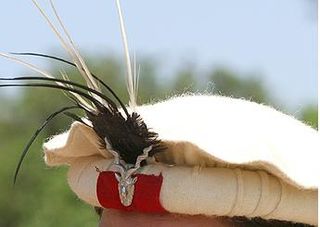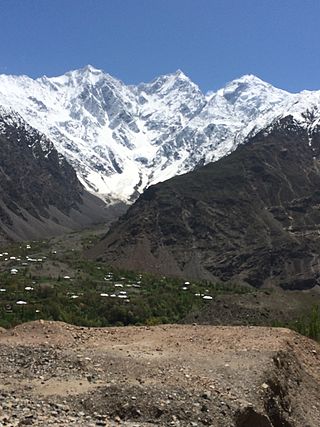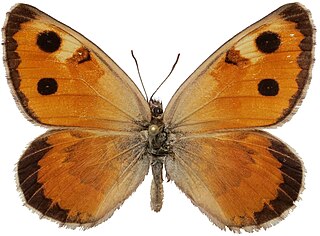
Gilgit is a city in Pakistani-administered Gilgit–Baltistan in the disputed Kashmir region. It is the capital of the Gilgit-Baltistan region. The city is located in a broad valley near the confluence of the Gilgit and the Hunza rivers. It is a major tourist destination in Pakistan, serving as a hub for trekking and mountaineering expeditions in the Karakoram mountain range.

Chitral District was a district in the Malakand Division of the Pakistani province of Khyber Pakhtunkhwa, from 14 August 1947 to 2018. It was the largest district in the Khyber-Pakhtunkhwa, covering an area of 14,850 km2, before splitting into Upper and Lower Chitral Districts in 2018. It was the northernmost district of Khyber Pakhtunkhwa. It shared a border with Gilgit-Baltistan to the east and with Swat and Dir districts of Khyber Pakhtunkhwa to the south. It also shared an international border with Afghanistan to the north and west. Afghanistan's narrow strip of Wakhan Corridor separated Chitral from Tajikistan in the north.

The Gilgit Agency was an agency within the British Indian Empire. It encompassed the subsidiary states of the princely state of Jammu and Kashmir situated along the northern border. The primary objective of establishing the Gilgit Agency was to bolster and fortify these regions, particularly in the context of concerns about Russian encroachment in the area. The subsidiary states encompassed Hunza, Nagar and other states in the present day districts of Gupis-Yasin, Ghizer, Darel, Tangir and Diamer. The agency headquarters was based in the town of Gilgit, within the Gilgit tehsil of Jammu and Kashmir.

The Ghizer District, was a district in the westernmost part of the Gilgit-Baltistan region of Pakistan, before splitting into the current Ghizer and Gupis-Yasin districts in 2019. The capital of the district was Gahkuch.

Chitral is a city situated on the Chitral River in northern area of Khyber Pakhtunkhwa. It serves as the capital of the Lower Chitral District, and was previously the capital of Chitral District, and before that the capital of Chitral princely state. The region was encompassed into West Pakistan between the years 1969 and 1972. It has a population of 49,780 per the 2017 census.

Yasin Valley is a high-altitude mountain valley nestled in the Hindu Kush mountain range, located in the northern region of the Gupis-Yasin District within Gilgit-Baltistan, Pakistan. The valley is situated approximately 148 kilometers from the city of Gilgit, which serves as the capital of Gilgit-Baltistan. Within the valley's territory lies Yasin Tehsil, an administrative subdivision of the region.

The pakol or pakul is a soft, flat, rolled-up, round-topped men's cap, usually worn in Afghanistan and Pakistan. It is typically made of wool and found in a variety of earthy colours, such as brown, black, grey, ivory, or dyed red using walnut. The pakol is believed to have originated in Chitral, or Gilgit-Baltistan in Pakistan.

Wakhan is one of the 28 districts of Badakhshan province in eastern Afghanistan. The district has a border with neighboring Tajikistan in the north, Xinjiang in China to the east, and Pakistan to the south.

Sir George Scott Robertson, was a British soldier, author, and administrator who was best known for his arduous journey to the remote and rugged region of Kafiristan in what is now northeastern Afghanistan and for his overall command of British Empire forces during the Siege of Chitral. He chronicled his Kafiristan experience in the book The Kafirs of the Hindu Kush. Some have suggested that Robertson's year-long expedition and subsequent book provided background and inspiration for Rudyard Kipling's short story "The Man Who Would Be King". However, Kipling's work was originally published in 1888, predating Robertson's travels to the region.

Mastuj is a tehsil of Upper Chitral District in Khyber-Pakhtunkhwa province of Pakistan; Mastuj is the principal settlement. It is located at 36°17'0N 72°31'0E with an altitude of 2359 metres. There are ruins of old fort built originally in 18th century and reconstructed several times.

Lepidopterology is a branch of entomology concerning the scientific study of moths and the two superfamilies of butterflies. Someone who studies in this field is a lepidopterist or, archaically, an aurelian.

The Chitral Expedition was a military expedition in 1895 sent by the British authorities to relieve the fort at Chitral, which was under siege after a local coup following the death of the old ruler. An intervening British force of about 400 men was besieged in the fort until it was relieved by two expeditions, a small one from Gilgit and a larger one from Peshawar.
The Katoor dynasty was a dynasty, which along with its collateral branches ruled the sovereign, later princely state of Chitral and its neighbours in the eastern Hindu Kush region for over 450 years, from around 1570 until 1947. At the height its power under Mehtar Aman ul-Mulk the territory controlled by the dynasty extended from Asmar in the Kunar Valley to Sher Qilla in the Gilgit valley. The Mehtar of Chitral was an influential player in the power politics of the region as he acted as an intermediary between the rulers of Badakhshan, the Yousafzai pashtuns, the Maharaja of Kashmir and later the Amir of Afghanistan.

Karanasa leechi is a butterfly of the family Nymphalidae. It is found in Asia, including the Darvaz Range in the Pamirs and the Hindu Kush.

Karanasa modesta is a butterfly of the family Nymphalidae. It is found in India.
Chitral Bodyguard or informally the Mehtar's Bodyguard, was a military force under the direct command of the Mehtar of the princely state of Chitral.
The Chitral Scouts (CS), also known as Chitral Levies, originally raised in 1903 as the militia of the princely state of Chitral, is now part of the Frontier Corps Khyber Pakhtunkhwa (North) of Pakistan. They are recruited mostly from the Chitral and Kalash Valleys areas along the western borders and are led by officers from the Pakistan Army. The Frontier Corps of Khyber Pakhtunkhwa (North) falls under the control of the Ministry of the Interior. Its headquarters is at Chitral town, and it is commanded by a Colonel of the Pakistan Army.

Aman ul-Mulk was the Mehtar of Chitral, Ghizer, Yasen and Ishkoman and Suzerain of Kafiristan. He ruled the State of Chitral from 1857 to 1892. His rule saw Chitral reach its territorial peak, extending from Ishkamun in Gilgit Agency to Asmar in Afghanistan. His death led to the Siege of Chitral, an instance of high drama which goes down in the annals of British India as an epic of enormous courage and determination.

Upper Chitral District (Khowar: توری ݯھیترارو ضلع)(Pashto: پورتنۍ چترال ولسوالۍ) is a district in the province of Khyber Pakhtunkhwa, Pakistan. Chitral River flows across the length of the district. Upper Chitral District along with Lower Chitral District were part of the erstwhile Chitral District which was the largest district in the Khyber-Pakhtunkhwa province, covering an area of 14,850 km2. Previously, it served as the Chitral princely state that encompassed the region until its incorporation into the Khyber Pakhtunkhwa province of Pakistan in 14 August 1947. The erstwhile Chitral District was bifurcated into Upper Chitral District and Lower Chitral District in November, 2018.















